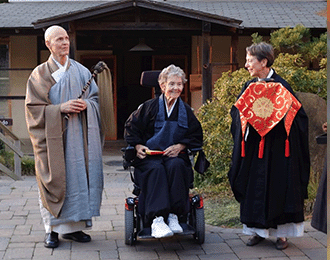What’s New in Knee Osteoarthritis Treatments?

By Web MD, Medically Reviewed by David Zelman, MD June 09, 2021, Updated December 2021
Knee osteoarthritis is very common, especially as people age. It happens when the cartilage that cushions the knee joint starts to wear down. That can happen as you get older or because of an old injury or other stresses on the joints.
Although there’s no cure, you can treat the pain. Your doctor may prescribe painkillers such as acetaminophen, nonsteroidal anti-inflammatory medicines (like aspirin, ibuprofen, or naproxen), or even narcotics. But long-term use of these drugs can lead to serious side effects in some people.
Some people also get shots of steroids to ease their symptoms. But they have side effects when used too long.
When medication and physical therapy don’t give you enough relief, total replacement of the knee joint is a last resort. But this isn’t right for everyone. Some people shouldn’t get this surgery because of their age or other conditions.
Researchers are looking for new ways to treat knee osteoarthritis. Some of the methods they’re trying include the following.
Hyaluronic Acid or Hyaluronate Injections
Also called viscosupplements, this treatment tries to restore synovial fluid, which is a slippery substance that helps lubricate joints.
A major component of synovial fluid is called hyaluronate. For more than 20 years, doctors have tried to restore mobility and curb pain by injecting hyaluronate directly into the knee joint.
Platelet-Rich Plasma (PRP) Injections
In this treatment, your doctor takes a sample of your blood and spins it in a machine called a centrifuge to pull out your blood’s platelets and plasma. When injected back into the joint, this super-concentrated mixture contains substances that could promote healing.
Despite its popularity with some high-profile athletes, PRP injections still aren’t proven, and the treatment formulations can vary a lot.
It is a treatment that is not recommended because of the lack of standardization of dosage and preparation.
Mesenchymal Stem Cells, or MSCs
Your bone marrow makes these types of cells. They can grow into new tissues, including cartilage. By gathering these cells and injecting them into the knee joint, the hope is that they will give rise to new cartilage and reduce inflammation.
It’s a hot area, with clinical trials going on. But most studies are still early.
A review published in 2016 in BMC Musculoskeletal Disorders concluded that MSC-based therapies offer an “exciting possibility” for treatment, but further studies need to work out how they can best be used and how well they work. Also, they’re expensive.
Bone Marrow Aspirate Concentrate
This draws on the same concept as MSCs. Experts take cells from your body and use them to stimulate the healing process inside your knee.
The advantage is bone marrow may be easier to obtain than MSCs, and contains other substances involved in promoting cartilage regrowth and calming inflammation.
While still a new approach, a review in the Orthopedic Journal of Sports Medicine found “good to excellent overall outcomes” from 11 studies. The researchers noted that some trials were tougher than others. So, they recommended that the treatment be used cautiously since a lot is still unknown.
Autologous Cultured Chondrocytes
This is a procedure to repair injuries, which can lead to osteoarthritis. It involves collecting the cells that form cartilage from your own joints, growing the cells in a laboratory, and then injecting these cells into the knee.
Invented in Sweden in the 1980s, the method has become common in orthopedic practices. The FDA approved the latest generation in December 2016. Called Maci, it puts the cells inside a dissolvable scaffold — placed inside the knee — that’s designed to grow new cartilage.
In a study of Maci involving 144 people, more than 87% of those who got Maci had improvement in symptoms over 2 years, compared with 68% who got a different cartilage-stimulating procedure called microfracture.
Botox Injections
Botulinum is a toxin made by the bacterium Clostridium botulinum. Because it can shut down nerve cells, doctors can use it to ease muscle spasms.
Some doctors are trying botulinum to help treat joint pain. The theory is that it might permanently deaden nerves and offer relief. But it wouldn’t affect the knee’s structure.
Does it work? A review of 16 studies published in 2016 in the journal Joint Bone Spine found that the results were conflicting, and the studies were too small to draw conclusions.
Water-Cooled Radiofrequency Ablation
This is another experimental procedure to treat pain. It aims to disable the nerves that are causing pain by heating them. “Water cooling” is a way to control the speed of warming. While it’s gotten a lot of publicity, studies so far are limited to small groups of people.
The Bottom Line
Promising new treatments are on the horizon. Unfortunately, it’s still too early to know how well they work. Much of the effectiveness may depend on the cause and severity of your arthritis. So, talk to your doctor and read the fine print before you try a particular treatment.





